This story by Andrew McLaughlin from the October 2019 edition of Australian Aviation looks at the Royal Australian Air Force (RAAF) Air Warfare Instructor Course (AWIC) course.
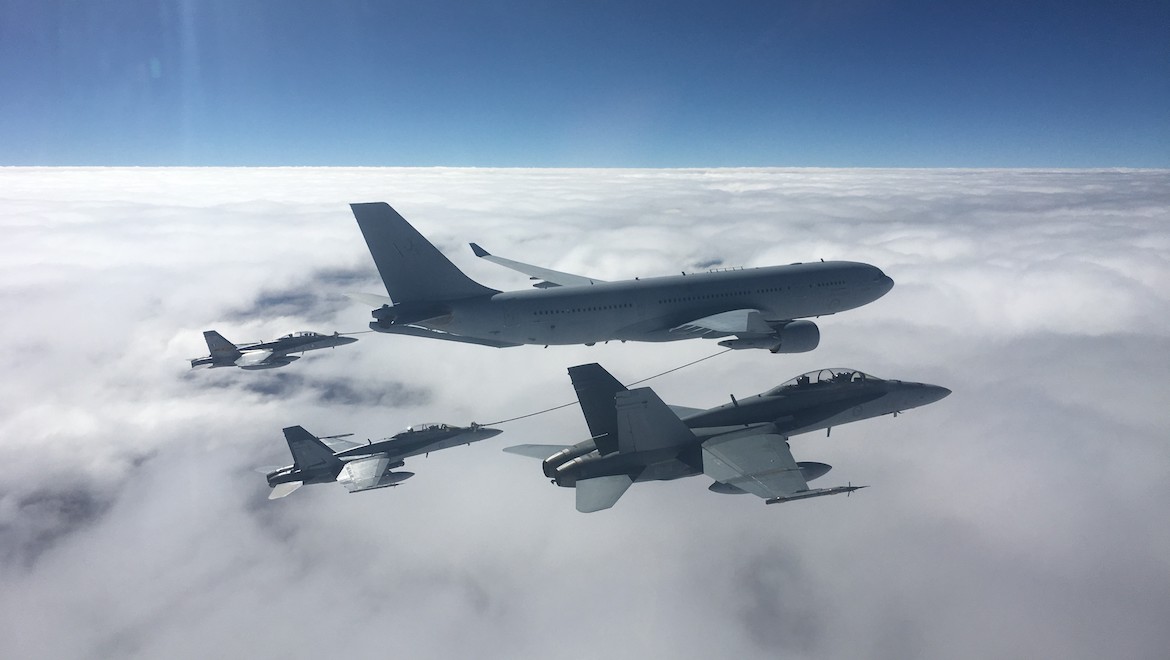
They are among the RAAF best of the best – the latest batch of Air Warfare Instructor (AWI) capability subject matter experts showing they have what it takes to emerge as graduates of the biennial 2019 Air Warfare Instructor Course (AWIC).
The course concluded with the now familiar Exercise Dawn Strike, an event where about 20 combat aircraft fought their way through a defensive force to conduct a simulated strike on RAAF Base Williamtown.
While flying en route from RAAF Amberley, the course candidates and their airborne instructors flying F/A-18 classic and Super Hornets and EA-18G Growlers were intercepted by other classic Hornets from Williamtown off the NSW mid-north coast, with the melee being “supervised” by an E-7A Wedgetail.
All attacking and defending aircraft then conducted a spectacular high-speed low-level “beat-up” of Williamtown in groups of up to four aircraft, before recovering at the base for the graduates’ informal patch presentation at the Williamtown mess.
A couple of nights later, graduates were presented with their qualifications and various awards of excellence in front of senior RAAF leadership, past and present Fighter Combat Instructor (FCI) and AWI patch wearers, their peers, and family and friends.
FROM FCI TO AWI
AWI course candidates are drawn from an increasing number of RAAF air combat specialties.
The FCI course was founded in 1954 by WGCDR Dick Creswell to develop specialist Fighter Combat Instructors from air combat lessons he had learned as Commanding Officer of 77SQN in the Korean War, and his previous air combat experience in WWII.
In 1954 the RAAF was flying Gloster Meteor fighters, and through the following four decades course candidates operated the CA-27 Sabre, Dassault Mirage IIIO, and the classic Hornet.
In 1992 the FCI course was expanded for the first time to include ground-based Fighter Intelligence Instructors (FII) and Fighter Combat Controllers (FCC), while later that decade the first F-111C strike crews were also invited to undertake the course and graduate as FCI “patch-wearers”.
FCIs are considered subject matter experts in the fields of air combat, strike, RAAF weapons systems, and adversary capabilities and tactics.
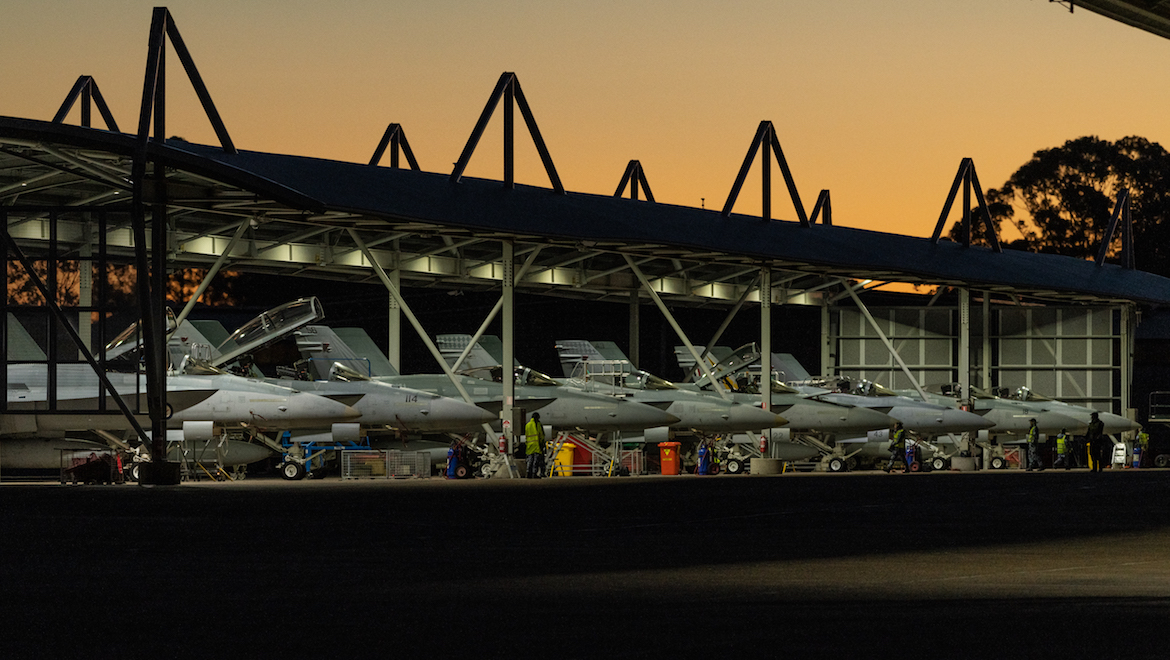
Following operational conversion (OPCON) to their aircraft type, pilots and air combat officers (ACO) will have completed at least one three-year squadron tour and a large force employment exercise such as Red Flag, Cope North or Pitch Black.
These major exercises are where fast jet crews are upgraded to a B Category (B-Cat) rating which qualifies them to lead four-ship formations in combat. Course candidates are then invited to participate based on their above-average competency and leadership qualities.
Up until 2017, the FCI Course was conducted wholly within Air Combat Group (ACG) and using ACG resources. Due to the limited resources of the operationally-focused force element group (FEG) – and despite the high-quality output of the course – the course’s scope was understandably limited.
“It was still a very fighter-centric course,” Air Warfare Centre Commander, AIRCDRE Phil Gordon told Australian Aviation.
“But with the advent of Plan Jericho and the Air Warfare Centre in 2016, the die was cast to fundamentally re-think how we execute that advanced integrated training, and we leant very heavily on the US Fighter Weapons School model when it broadened its scope to become the USAF Weapons School.
“The first AWIC we ran was in 2017, and that was the first one that was not entirely based around fighters with other supporting capabilities, but became a whole-of-community integrated effort.”

With its own dedicated budget and instructional resources to draw upon, the AWIC was brought under the Tactics and Training Directorate (TTD), an element of the Air Warfare Centre.
“The Air Warfare Centre I would say was born of Plan Jericho and the need to drive the Air Force to make the most of all the new capabilities that are being introduced,” AIRCDRE Gordon said.
“When it was formed in January 2016 with the motto to “Ready the Warfighter”, it really was focused on driving innovation and integration across all of Air Force to get us to that 5th generation future.
“One of the newly created directorates within the AWC at that time was the TTD which has 88 Squadron within it,” he added.
“I think the TTD is one of the real crown jewels in our drive for high-end integration. It has some really high-calibre subject matter experts from each of the platforms and systems that we use operationally, and we put them all together and make them work out how to get all the systems to work together and how to fight as a system-of-systems, not as a series of individual platforms.
“Having developed these tactics, 88SQN really shapes the training and the tactics and the development of the rest of Air Command, so that everyone is heading in the right direction to deliver on that integrated future.”
While the AWC is headquartered at RAAF Edinburgh near Adelaide, the “critical mass” of TTD and 88SQN is based at RAAF Williamtown in order to be co-located with ACG, 81WG, Headquarters Surveillance & Response Group (HQSRG), 41WG, 42WG, the E-7As Wedgetails of 2SQN, and most of the fighter squadrons’ headquarters.
The TTD is currently headed by GPCAPT Matt McCormack and 88SQN is commanded by WGCDR Tim Main. GPCAPT McCormack is a classic Hornet pilot and a former CO of 2OCU, while WGCDR Main is an air combat officer and a qualified Fighter Combat Controller (FCC).
With the change from FCI course to AWIC, the 2017 course was vastly expanded to include AEW&C Combat Instructors (ACI) from the E-7A Wedgetail, and Mobility Tactics Instructors (MTI) from the C-130J. Also in 2017 the FII qualification was “re-branded” as ICI, or Intelligence Combat Instructor.
“So we broadened the community away from just fighters to include Wedgetail and C-130s,” AIRCDRE Gordon said. “Then in 2019 we created a Growler Tactics Instructor (GTI).”
Prior to 2017, FCI courses usually graduated between six and 10 fast-jet crew members plus a few FIIs and FCCs. But AWIC19 graduated a total of 27 AWIs across six specialist domains, comprising eight FCIs (five classic Hornet pilots, two Super Hornet pilots, and one Super Hornet ‘back-seater’ weapons systems operator), four FCCs, three ICIs, five ACIs, three MTIs, and four GTIs.

(Defence)
COURSE ELEMENTS
Exercise Dawn Strike at the end of May was just the last of several major exercise elements conducted over the five months of the course.
The first of these was Exercise Diamond Sage conducted in Canberra in January which comprised planning meetings and briefings in conjunction with Air Force Headquarters (AFHQ) and other participating ADF capability managers. Following that was an initial instructional phase in February, before the course rolled into Exercise Diamond Shield in March.
Diamond Shield – previously known as Aces South – is an air defence exercise conducted at Williamtown and Amberley and the airspace in between, and this year was supported by visiting USAF F-16C/D fighters from the 18th Aggressor Squadron based at Eielson AFB in Alaska.
Following an additional instructional phase, the course rolled into Exercise Diamond Spear – previously known as Aces Strike – which is a dedicated air-to-ground phase using live and simulated ordnance on the ranges around Williamtown and Amberley.
In between all the flying activities of the course, the AWIs are required to complete intensive academics to provide theoretical grounding for what they will later be required to put into practice.
The major exercise element of the AWI course was the massive three-week long Exercise Diamond Storm which was conducted primarily in the Northern Territory ranges around Darwin and RAAF Tindal near Katherine.
Formerly called Aces North, Diamond Storm this year included visiting USAF F-15C Eagles of the 144th Fighter Wing (144FW), California Air National Guard based in Fresno, and B-52Hs from the 23rd Expeditionary Bomber Squadron (23EBS) on a rotational deployment at Anderson AFB on Guam that were working with the ADF on the regular Enhanced Air Cooperation (EAC) program.
“There are multiple levels why it is important for USAF to support exercises like Diamond Storm, the major one being interoperability between the United States and Australia,” the 23EBS Assistant Director of Operations, Maj Bryson Ayers said in a statement during the exercise.
“We train together because it gives us a better understanding of the people we are likely to work with in the future.
“It’s sometimes the small things that build the strongest relationships, we don’t just fly together – we eat together and attend briefs together,” Maj Byers added.
“We are learning about how life is different in the two countries and yet essentially the same. It has been an enriching couple of weeks for the crew on the ground here.”
In addition to the USAF assets, there were also US Marine Corps AH-1Z Vipers, UH-1Y Venoms and MV-22B Ospreys, and Alpha Jets and Learjets operated by Air Affairs and Raytheon to provide additional electronic warfare, adversary force, and a force multiplication capability.
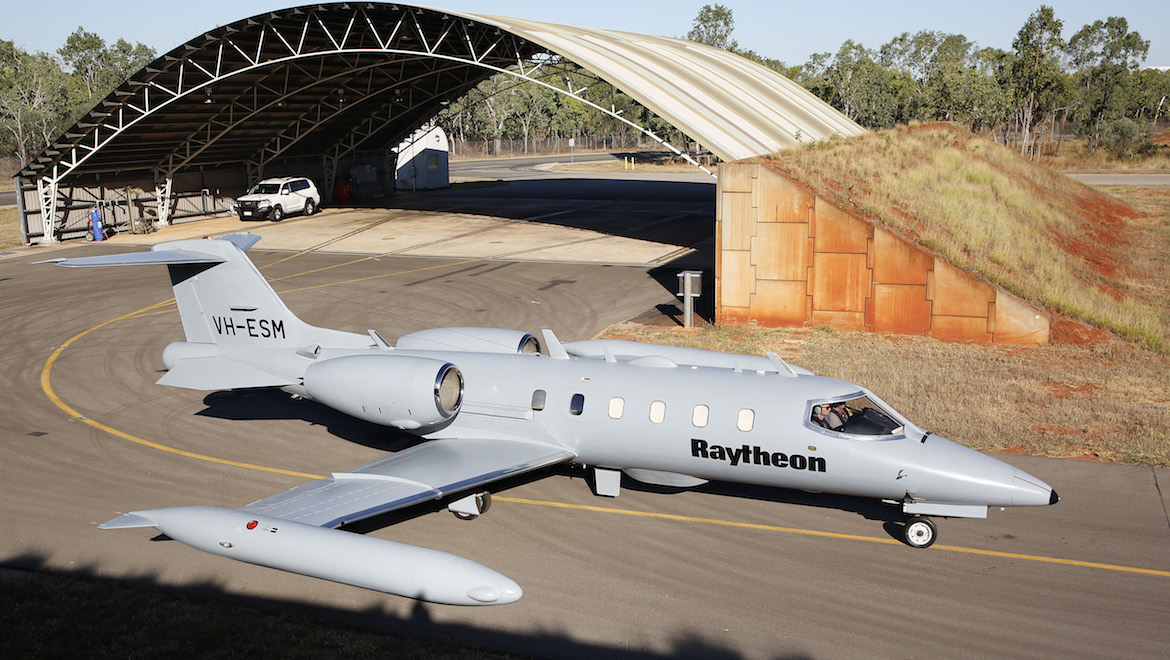
The Raytheon Electronic Warfare Training Systems (EWTS) Learjet 35A provides a simulated contested electromagnetic environment which course candidates need to manage and “fight” through. An ADF statement said the EWTS inclusion in the adversary forces order of battle introduced radar jamming, communications denial and deception through accurate threat simulation.
“When we experience jamming from the Learjet it makes it more difficult for us to be able to target that aircraft,” F/A-18A pilot FLGOFF “Georgi” said in a statement during the exercise.
“We have to use our radar in a more deliberate manner to achieve an affect. It increases the complexity of the task and is a fantastic simulation of what would happen in the real world.”
Raytheon also deployed its Mobile Threat Training Emitter System (MTTES) system from Oakey in Qld to the NT for Diamond Storm. The MTTES is a new capability designed to provide an operationally representative ground-based threat, the effects of which can be coordinated with other air and ground elements to create a layered defence posture that requires advanced integrated planning and execution to overcome.
“The threat emitters give us another layer of targeting complexity when we are focused on delivering weapons on our adversary’s doorstep,” said FLGOFF Georgi.
“We must defend against surface-to-air threat systems that can pop-up without notice anywhere in the area of operation. It’s been great to see our aircraft threat warning indicators react in real time to surface-to-air threats. It really makes a difference when you see an indicator light up as opposed to having to pretend.”
Diamond Storm also saw the final employment of the Dornier Alpha Jets as adversaries prior to their return to Canada. Operated by Discovery Air Defence Services under Air Affairs Australia’s existing Jet Air Support contract, the three former Luftwaffe Alpha Jets have been based at Williamtown since August 2017 on a two-year trial contract to provide adversary “Red Air”, Joint Terminal Attack Controller (JTAC) training, and RAN fleet support work.
Another simulated threat employed for Diamond Storm was a Royal Air Force (RAF) Skyguard radar and inflatable simulated weapons system which was set up in the Bradshaw Range south-west of Darwin. The RAF said that when the Skyguard radar and inflatable weapons system were paired together, they created a layered defence.
“The Skyguard radar can track aircraft up to 16 kilometres away and has twin 35mm cannons with a range of four kilometres,” RAF Aerospace Systems Manager, SGT Nick said in a statement during the exercise.
“In a real world scenario it would be used to protect high value assets like a hospital or base headquarters.
“Skyguard sends out an electronic signal to the aircraft, giving the aircraft a realistic target on the ground,” he added. “From the air, a pilot will see an inflatable tank and react to the threat from the Skyguard. Our equipment is simulating an adversary force that the AWIC candidates have to identify, engage or manoeuvre around.”
Following Diamond Storm, the Skyguard radar and inflatable weapons systems was deployed to Queensland and used in Exercise Talisman Sabre 2019.
Apart from the fast jets, other ADF Diamond Storm assets included Hawk 127, AP-3C (EW) Orion, P-8A Poseidon, C-17A, KC-30A MRTT, E-7A Wedgetail and C-130J Hercules, as well as 114 Mobile Control and Reporting Unit (114MCRU) and 3CRU operating AN/TPS-77 Tactical Air Defence Radar Systems (TADRS), Army SASR special forces and Tiger ARHs, and 4SQN combat controllers.
At the south-western corner of the vast Bradshaw Range near Timber Creek, 3CRU set up its TPS-77 unit, while 114MCRU set up its radar and communications systems at Pine Creek between Darwin and Katherine.
“Our TADRS has a range of up to 250 nautical miles, and our role here is to help provide a three dimensional air picture in exercise scenarios,” 3CRU communication electronics Technician CPL Steve Maley said in a statement during the exercise. “We are trained to deploy our radar capability to the most remote locations.”
“3CRU are emulating an enemy force during Diamond Storm,” he added. “We are playing the ‘baddies’ to provide complex training for the course. We have to keep the radar spinning to keep the exercise going. If a jet breaks it can potentially sit out of a mission, but if our radar goes down there is a crucial missing link.”
Also supporting the exercise was the newly upgraded Delamere Air Weapons Range (DELAWR), a half-million acre area south-west of Katherine that the ADF described as “Australia’s premier weapons ranges for practice gunnery and both inert and high explosive bombing”.
The range has recently received new accommodation, recreation and messing facilities to better support permanent staff and those deployed for major exercises and training events.
“The new facilities have more work stations and work areas meaning that we can more easily accommodate exercise personnel,” Officer in Charge Range Operations, WGCDR Lynette Horne said in a statement during the exercise.
“We now have a dedicated and permanent facility for Raytheon, an operations centre and briefing room, a dedicated medical room with trauma bed and purpose-built explosive ordnance storage areas.
“The new facilities have enhanced our ability to provide a high-quality support base for operations in the field. All the permanent staff here look forward to the future growth of the range.”
Further upgrades are scheduled for DELAWR, including the all-important electronic warfare training range capability that will be required to provide high-fidelity threat training for the RAAF’s F-35A, EA-18G Growler, and the forthcoming Gulfstream G550-based MC-55A Peregrine electronic warfare system.
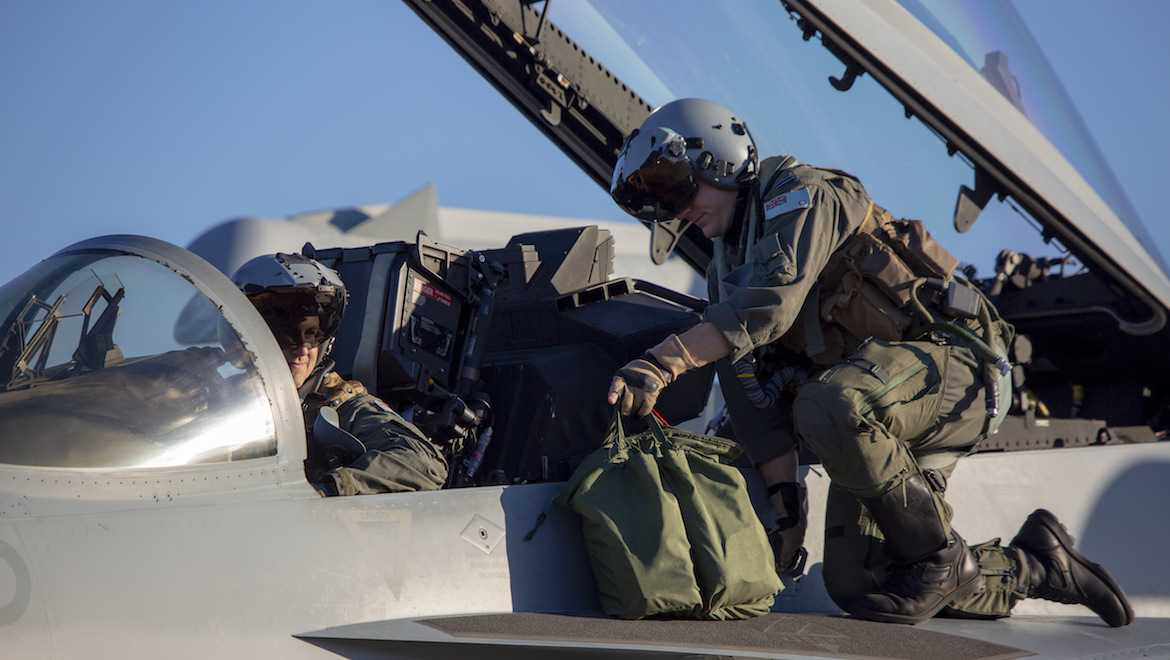
FUTURE AWIC
While AWIC19 saw the course’s continued expansion into new skillsets and categories, it was also a somewhat poignant one for the RAAF. With the F/A-18A/B classic Hornet due to retire from RAAF service in 2021/22 after 37 years of service, this will likely have been the final AWI-FCI course led by 2OCU flying classic Hornets.
In July, the RAAF commenced the final operational conversion course (OPCON) to the classic Hornet. Once that course is complete later this year, 2OCU will divest itself of its Hornets before elements of the squadron will relocate to Luke AFB in Arizona in early 2020 to begin its conversion to the F-35A, before returning to Williamtown in late 2020.
“Having worked in ACG for a large part of my career, I have seen the evolution from where we started with the Hornet to where we have ended up, and the progression has been remarkable,” Commanding Officer of 2OCU, WGCDR Scott Woodland said.
“It’s not just about the capability of the jet, but also the development of the whole team from aircrew to support crew, we have become an effective and efficient force that is set up well for the future.
“It is sad to see the Hornet retire, but it’s also an exciting time as we transition to the F-35A and beyond, evolving into that next generation fighting force.”
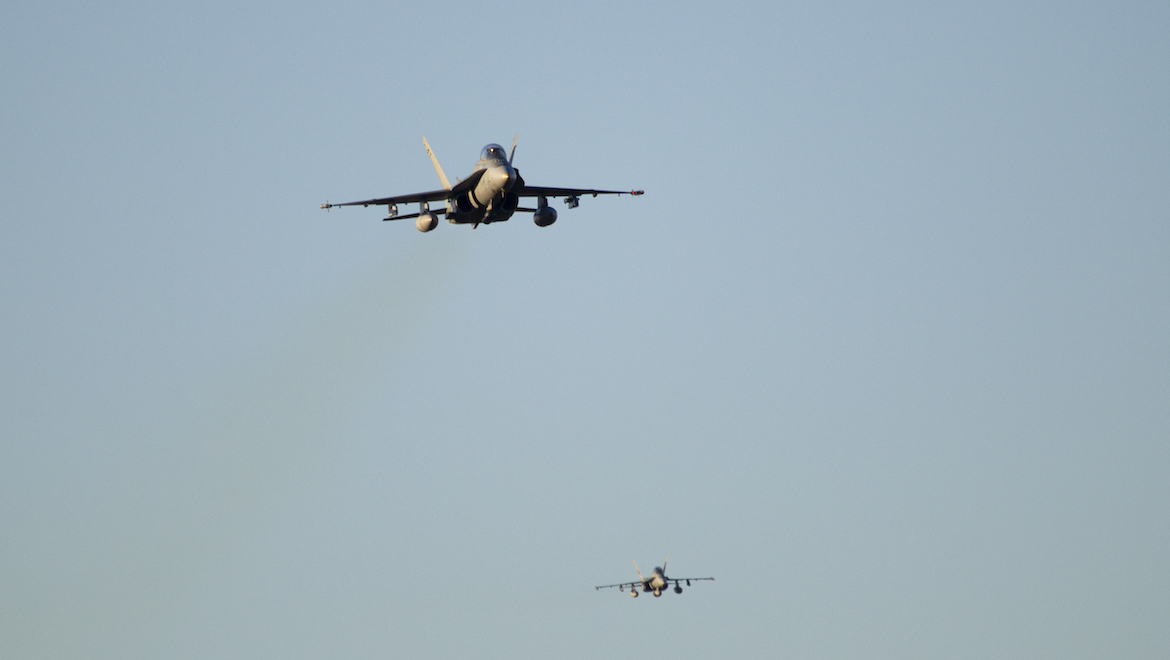
In the meantime, 77SQN at Williamtown and 75SQN at Tindal will continue to operate the Hornet as operational squadrons and, while they will conduct upgrades and refreshers “in-house” through their own training flight elements, from next year all formal RAAF fast-jet pilot training will be conducted on the F/A-18F, EA-18G and F-35A.
By the next AWIC in 2021, one RAAF squadron of F-35As will have achieved an initial operational capability (IOC) and another will be well advanced, and local operational conversion will be well underway. But the rapidly increasing tempo of F-35 training and operational workups mean it is unlikely the RAAF will be ready to send any F-35 pilots to the 2021 course.
But the F-35A community will still play a major role in AWIC21 by providing air combat, strike, intelligence surveillance and reconnaissance (ISR), joint-force integration, and other support roles to the exercise.
Meanwhile a high priority for AWIC21 for the RAAF is to develop an AWI category for the P-8A Poseidon maritime ISR aircraft.
VIDEO: A look at the Air Warfare Instructor Course Dawn Strike from inside an F/A-18A/B Hornet from the RAAF YouTube channel.
This story first appeared in the October 2019 edition of Australian Aviation magazine.













